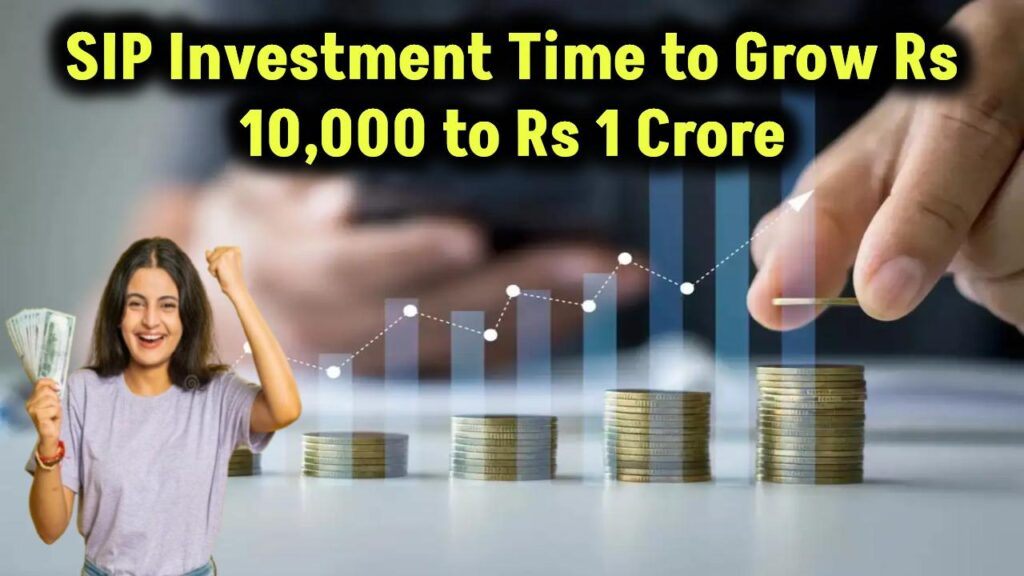
Investing through a Systematic Investment Plan (SIP) has become a popular way to accumulate wealth over time. If you’re wondering how long it will take for a monthly SIP of Rs. 10,000 to grow into Rs. 1 crore, this article will break it down for you in a simple, yet expert manner.
SIP investments are an excellent way to build wealth gradually, leveraging the power of compounding and disciplined investing. Whether you’re a seasoned investor or just starting, understanding how long your SIP will take to reach Rs. 1 crore can help in better financial planning.
Also Check: Post Office Scheme: By saving just Rs 250, you will get more than 24 lakh returns in this post office scheme
Understanding SIP and Compounding
A Systematic Investment Plan (SIP) allows you to invest a fixed amount regularly in a mutual fund. Over time, your investments grow due to compounding, where the returns you earn generate additional returns.
How Does SIP Work?
- Every month, you contribute a fixed amount to a mutual fund.
- The amount is invested in the stock market, benefiting from potential growth.
- Returns accumulate over time, compounding to create significant wealth.
How Long Will It Take to Reach Rs. 1 Crore?
The time required to accumulate Rs. 1 crore through a monthly SIP of Rs. 10,000 depends on the rate of return. Below is an estimate based on different annual returns:
| Expected Return (Annual) | Time Required to Reach Rs. 1 Crore |
| 8% | 25 years |
| 10% | 22 years |
| 12% | 20 years |
| 14% | 18 years |
Example Calculation (12% Annual Return)
- SIP Contribution: Rs. 10,000 per month
- Expected Return: 12% per annum
- Time Required: ~20 years
- Total Investment: Rs. 24 lakhs
- Wealth Accumulated: Rs. 1 crore
This calculation is based on the assumption that the market delivers consistent returns, though in reality, returns fluctuate.
Factors Affecting SIP Growth
Several factors influence the growth of your SIP:
1. Market Performance
- Mutual funds invest in stocks and bonds, which are affected by market trends.
- Long-term investing reduces the impact of short-term fluctuations.
2. Expense Ratio of Mutual Funds
- Mutual funds charge a small fee (expense ratio) for managing investments.
- Choosing funds with lower expense ratios can enhance returns.
3. Step-Up SIP Strategy
- Increasing SIP contributions yearly by 5-10% can help reach Rs. 1 crore faster.
- Example: If you start with Rs. 10,000 and increase by 10% annually, you could reach Rs. 1 crore in 16-18 years instead of 20.
Best Mutual Funds for SIP Investment
Choosing the right mutual fund is crucial for maximizing returns. Here are some top-performing mutual funds for SIP investment:
Top Large-Cap Funds
- Axis Bluechip Fund
- Mirae Asset Large Cap Fund
- SBI Bluechip Fund
Top Mid-Cap Funds
- Nippon India Growth Fund
- HDFC Mid-Cap Opportunities Fund
Top Small-Cap Funds
- SBI Small Cap Fund
- Axis Small Cap Fund
How to Choose the Right Fund?
- Check past performance over 5-10 years.
- Look at fund manager expertise.
- Consider expense ratios and risk appetite.
Taxation on SIP Investments
1. Short-Term Capital Gains (STCG) Tax
- If redeemed within 1 year, gains are taxed at 15%.
2. Long-Term Capital Gains (LTCG) Tax
- Gains above Rs. 1 lakh in a year are taxed at 10%.
3. Tax Benefits on ELSS Funds
- Equity Linked Savings Scheme (ELSS) funds offer tax deductions up to Rs. 1.5 lakh under Section 80C.
Risks Involved in SIP Investing
1. Market Volatility
- SIPs invest in equity and debt markets, which can be volatile.
- Long-term investing reduces risk.
2. Fund Performance Risk
- Not all funds perform well. Choose funds with a strong track record.
3. Liquidity Risk
- Equity funds have no lock-in period, but ELSS funds have a 3-year lock-in.
Steps to Start a SIP Investment
Starting a SIP is simple and can be done online. Follow these steps:
Step 1: Set a Goal
- Define your investment goal (e.g., Rs. 1 crore in 20 years).
Step 2: Choose a Mutual Fund
- Research and select a high-performing fund that aligns with your risk profile.
Step 3: Use an SIP Calculator
- Tools like Moneycontrol SIP Calculator help estimate returns.
Step 4: Open a Mutual Fund Account
- Register with a trusted platform like Zerodha, Groww, or Paytm Money.
- Complete KYC verification.
Step 5: Set Up Auto-Debit
- Automate monthly SIP payments to ensure disciplined investing.
Also Check: Post Office NSC Scheme! You can make 43 lakh rupees in just 5 years, know how
(FAQs)
1. Is SIP better than a Fixed Deposit (FD)?
- Yes, SIPs in equity mutual funds offer higher returns (10%-14%) compared to FDs (5%-7%).
2. Can I stop my SIP anytime?
- Yes, SIPs offer flexibility, and you can pause or stop anytime without penalties.
3. What if the market crashes?
- Continue investing. SIPs benefit from rupee cost averaging, buying more units when markets are down.
4. How do taxes affect SIP returns?
- Equity SIPs have 10% tax on long-term capital gains (above Rs. 1 lakh per year).
- Debt SIPs are taxed based on income slab.







5 thoughts on “SIP Investment: Know in how many years a SIP of Rs. 10,000 will become Rs. 1 crore”